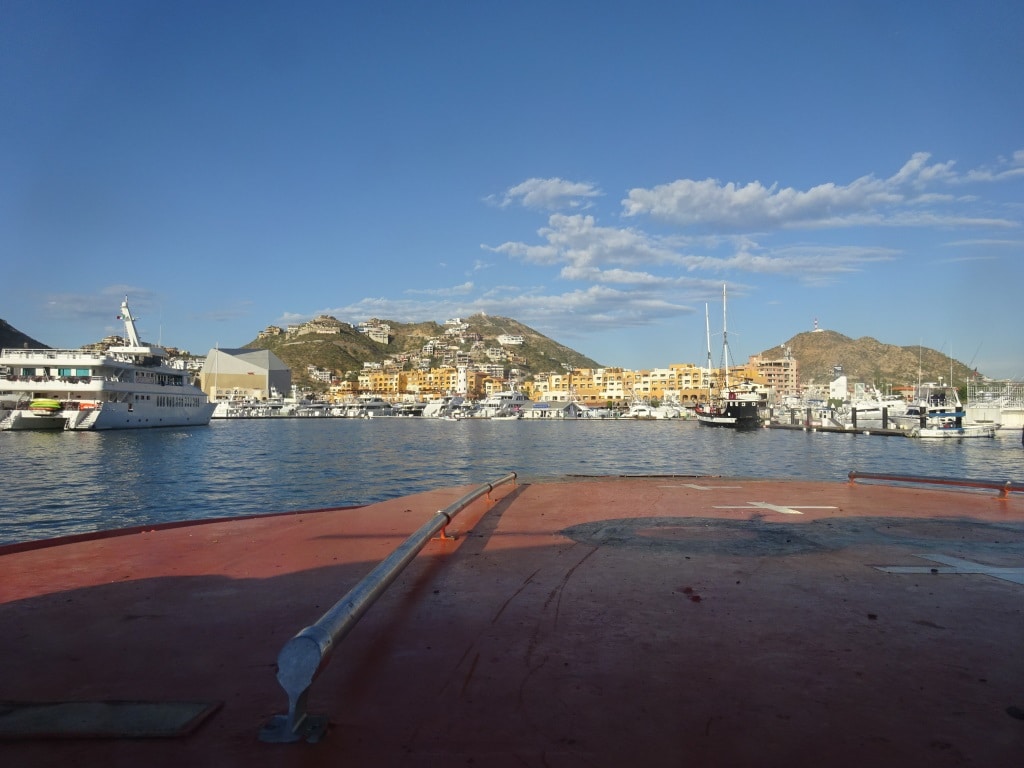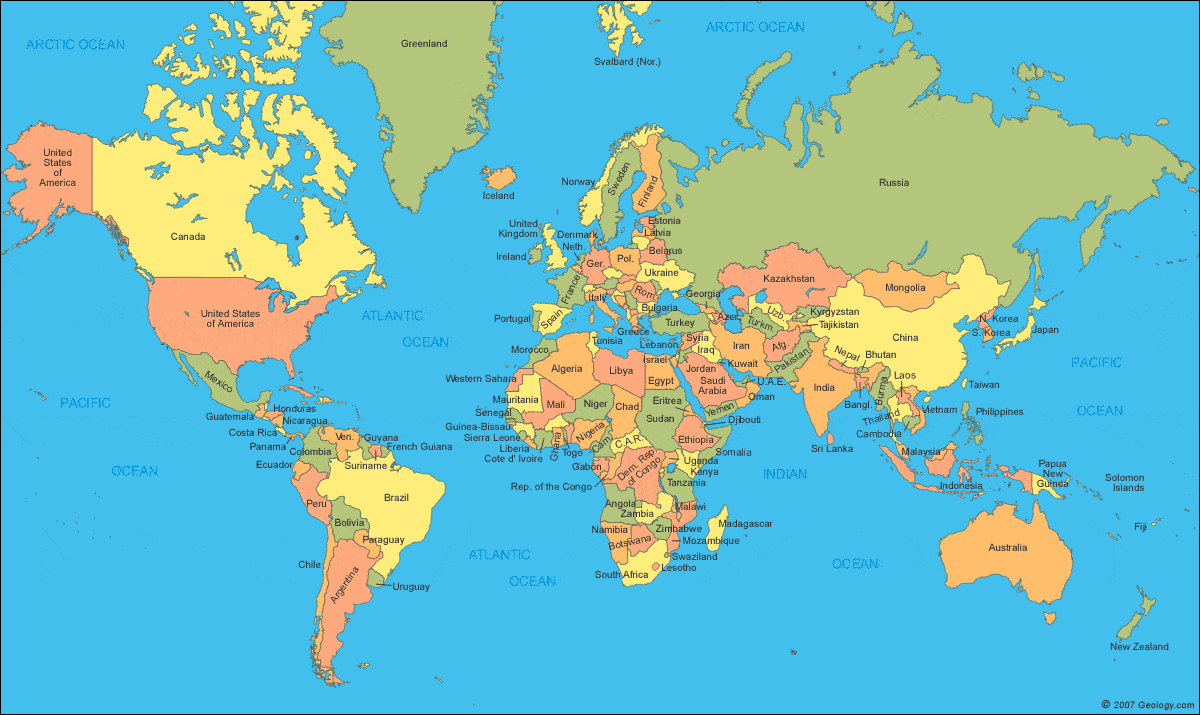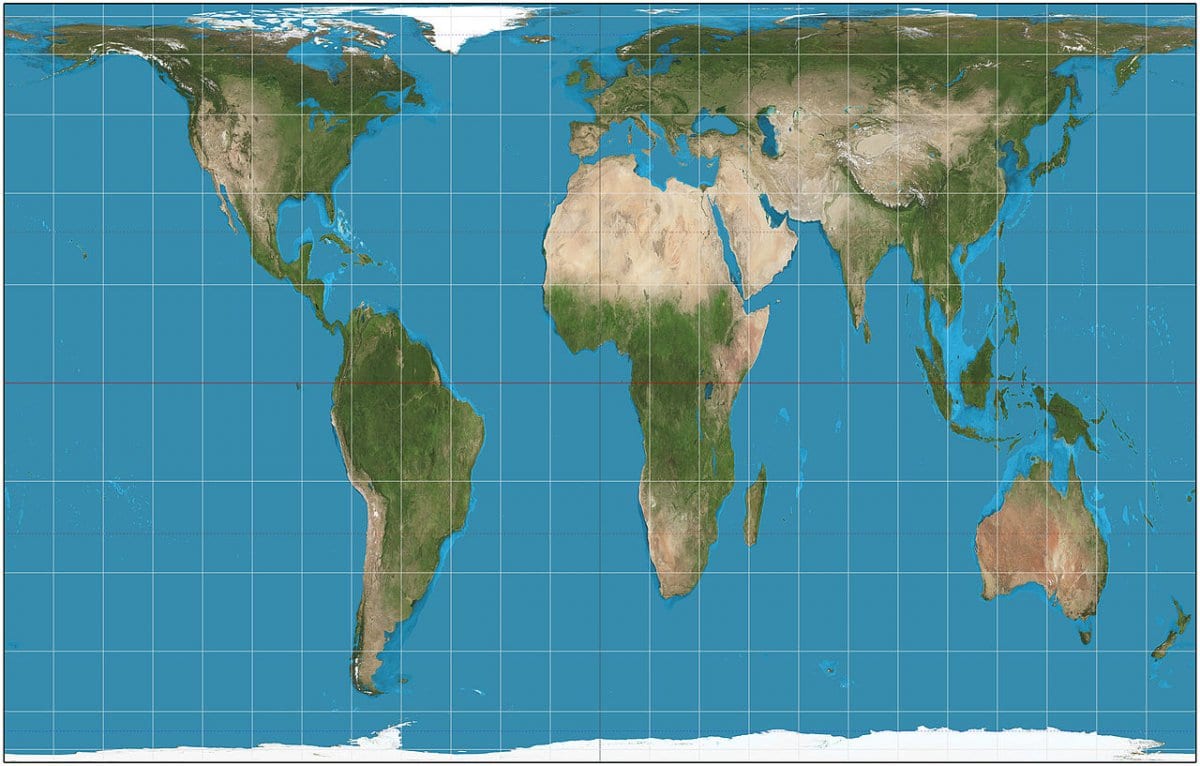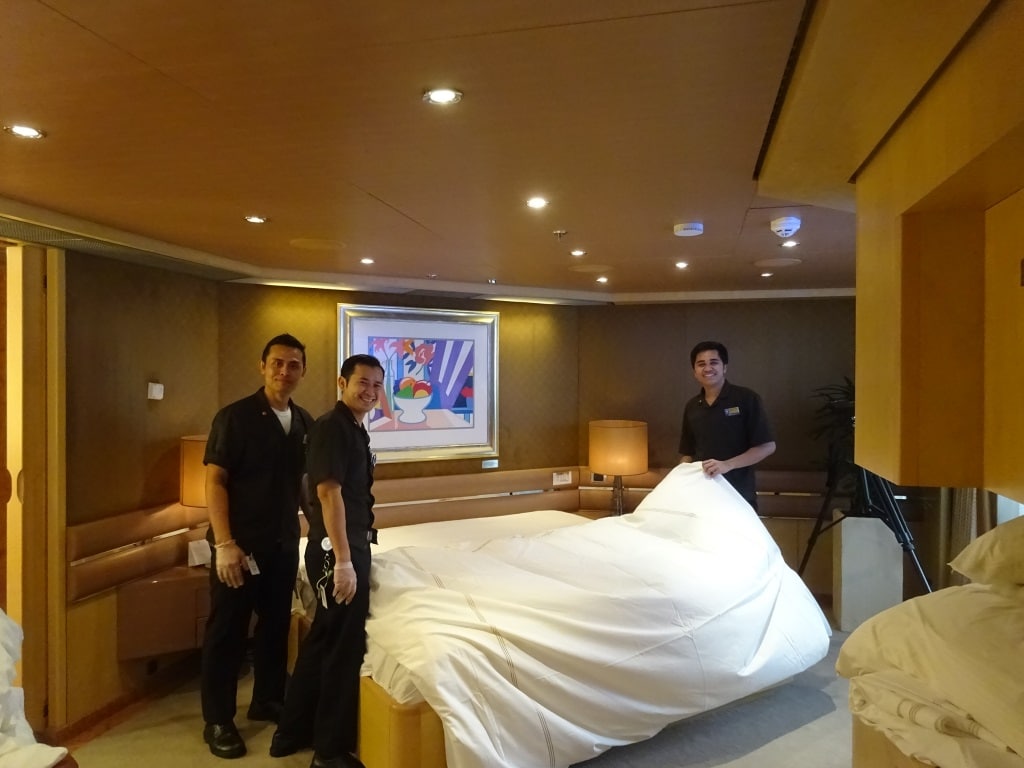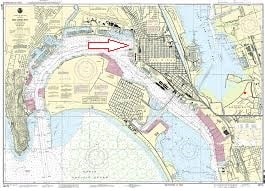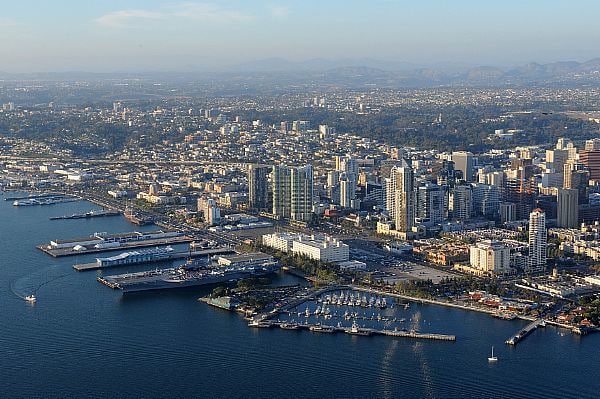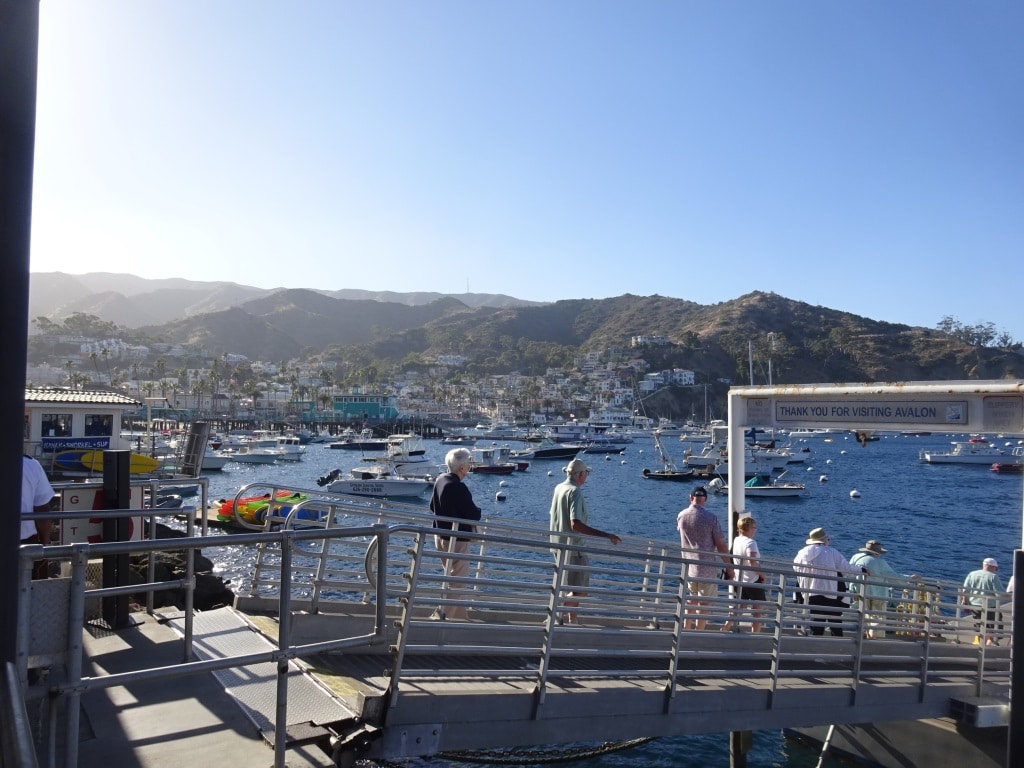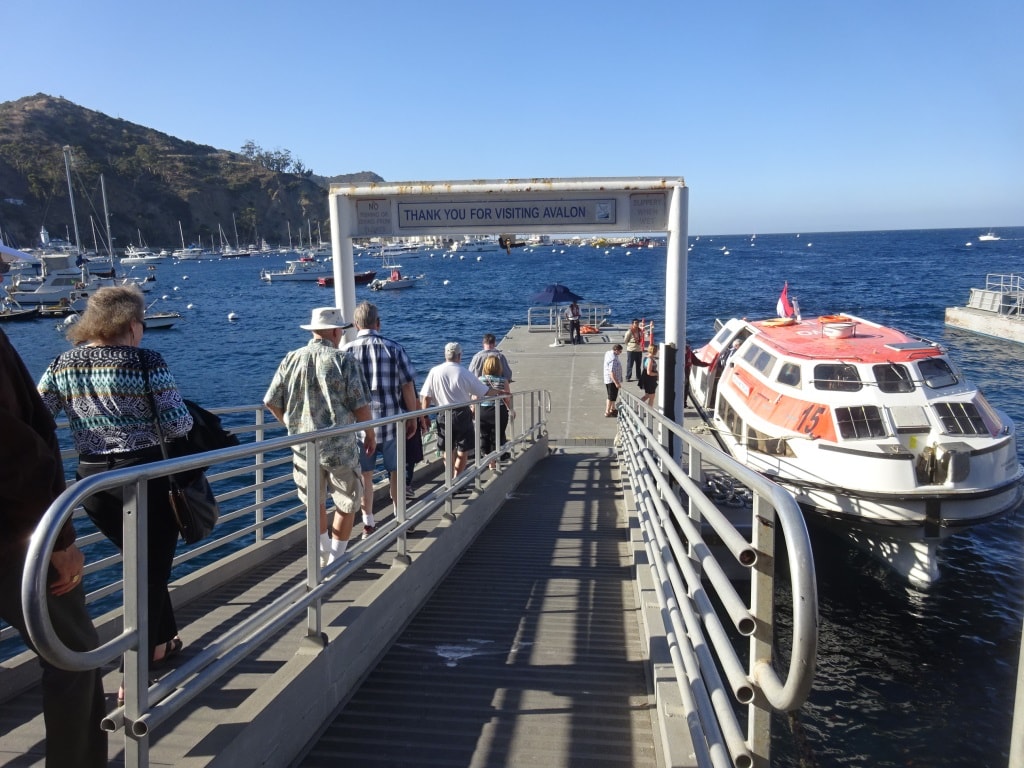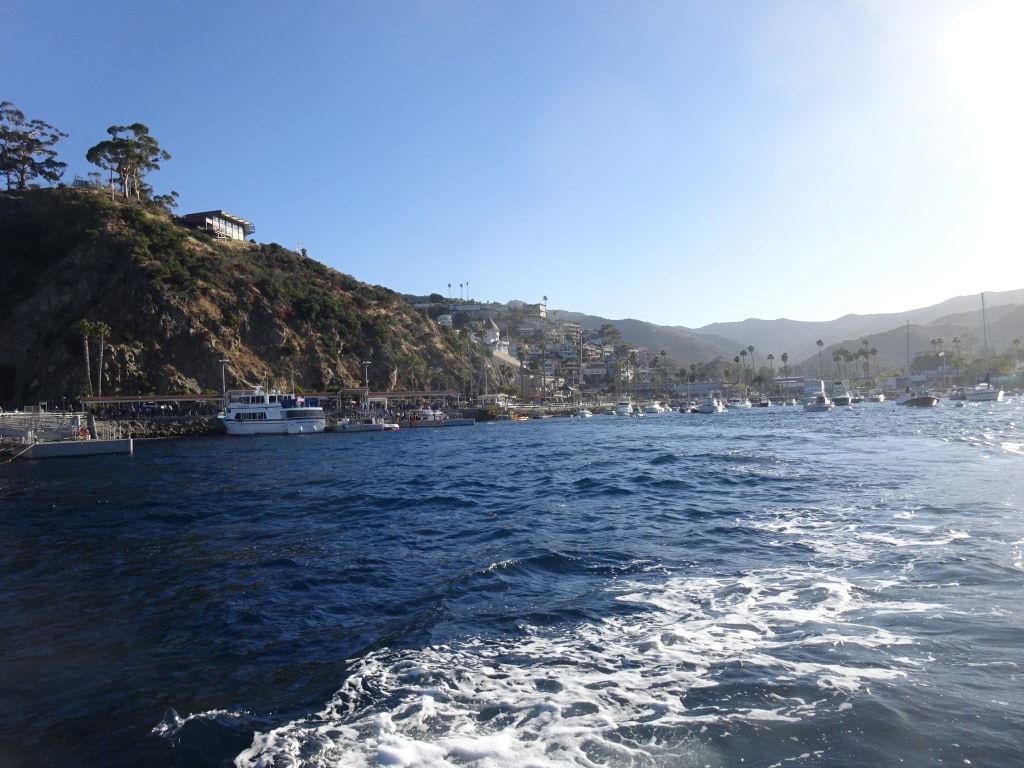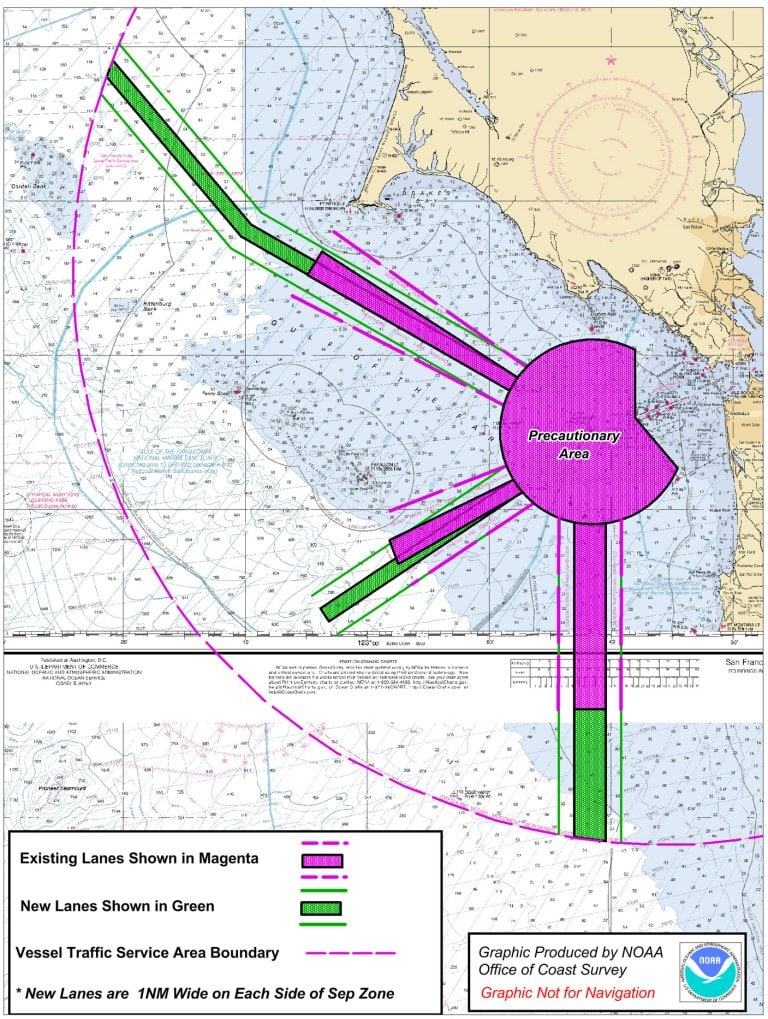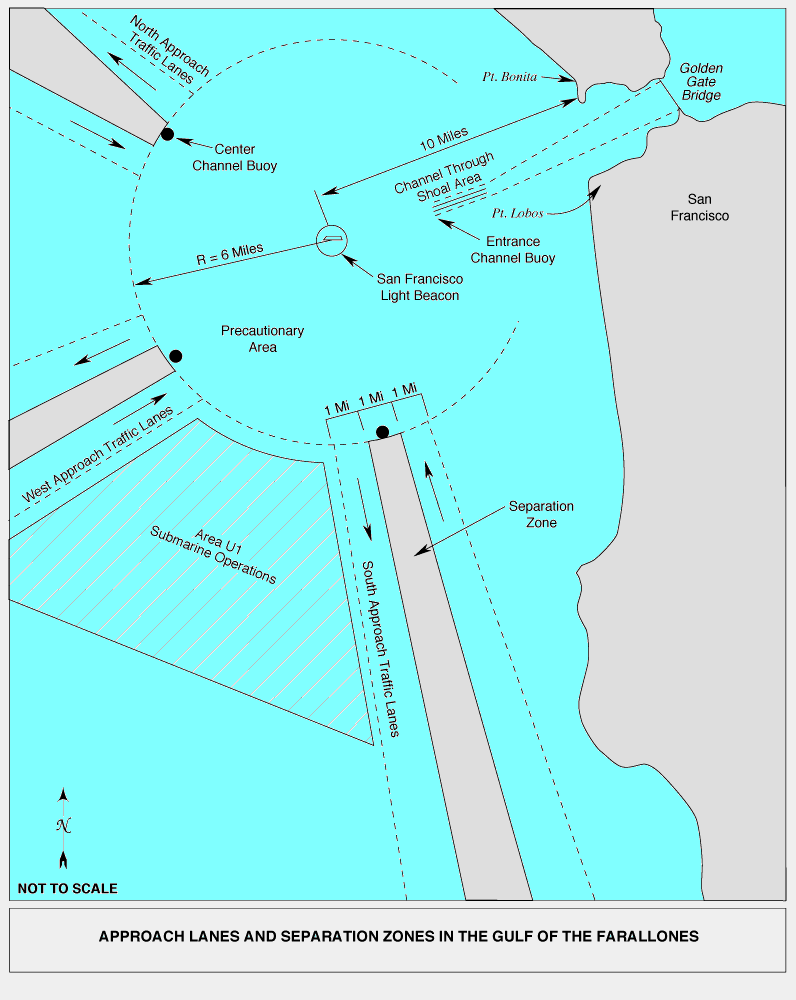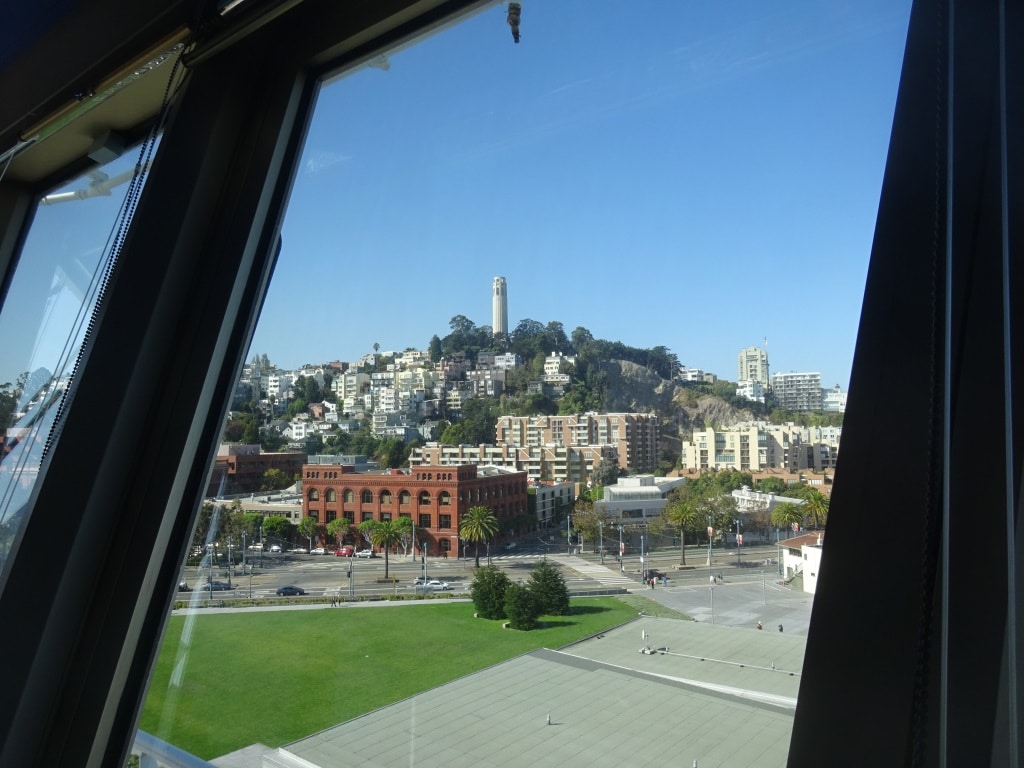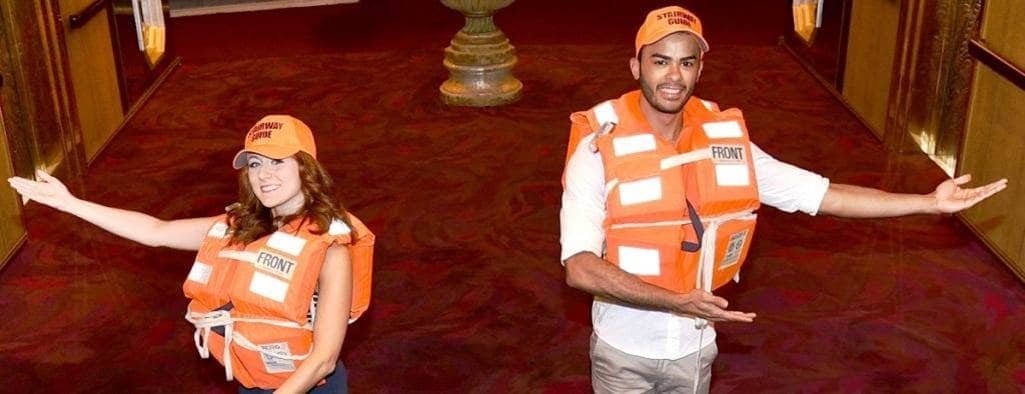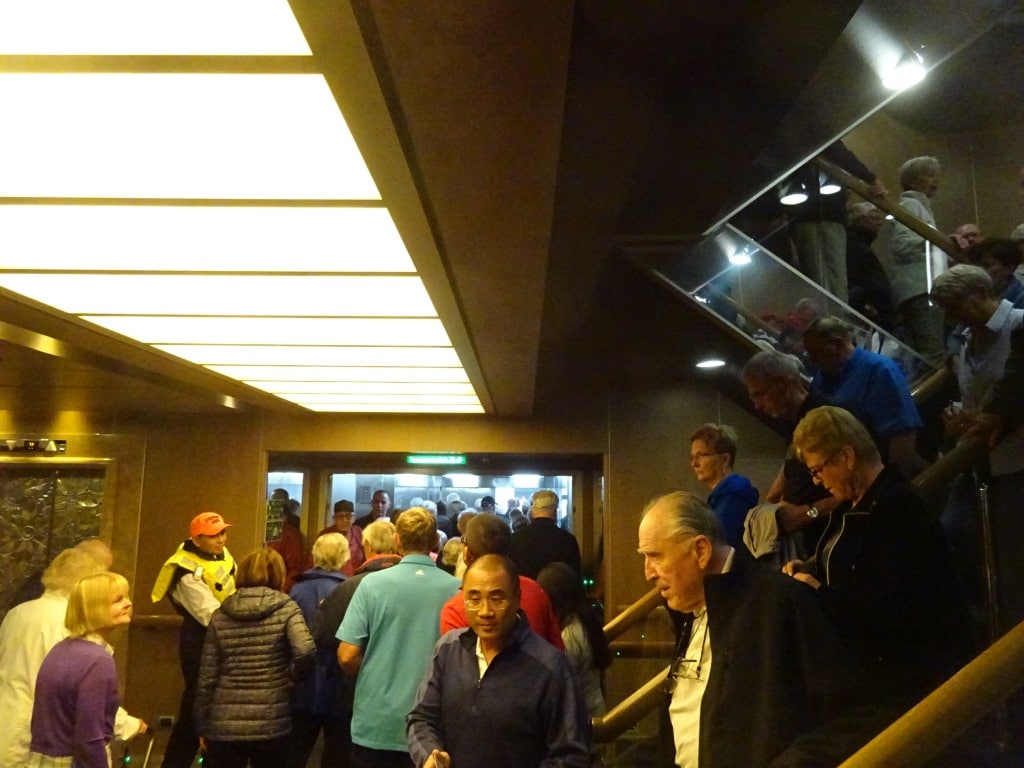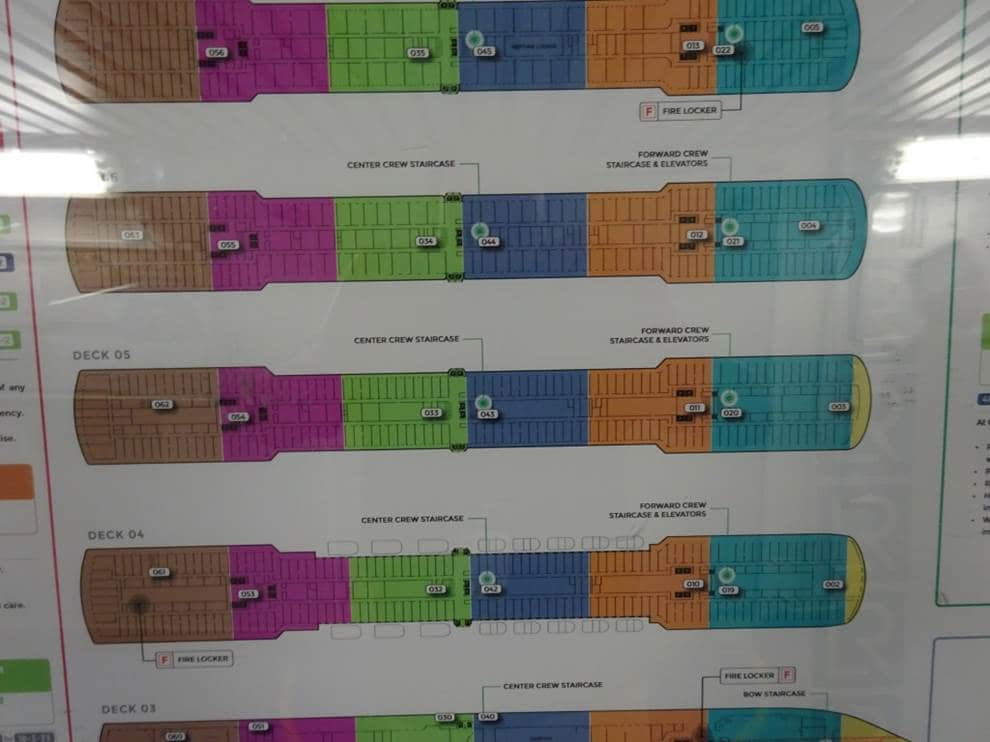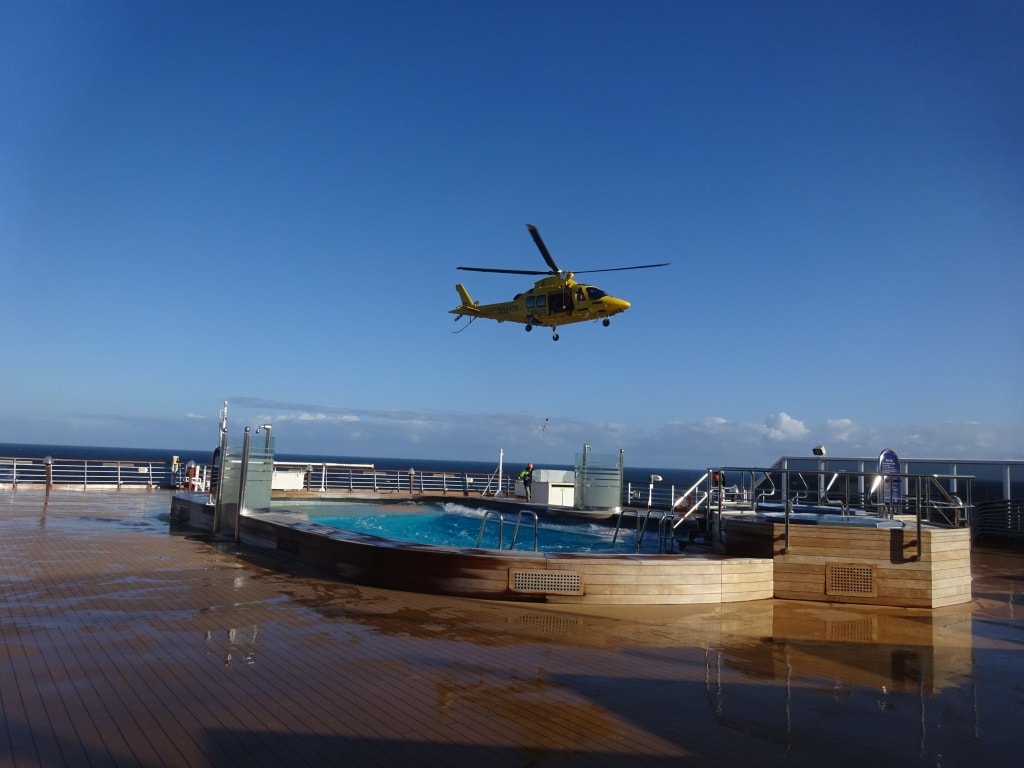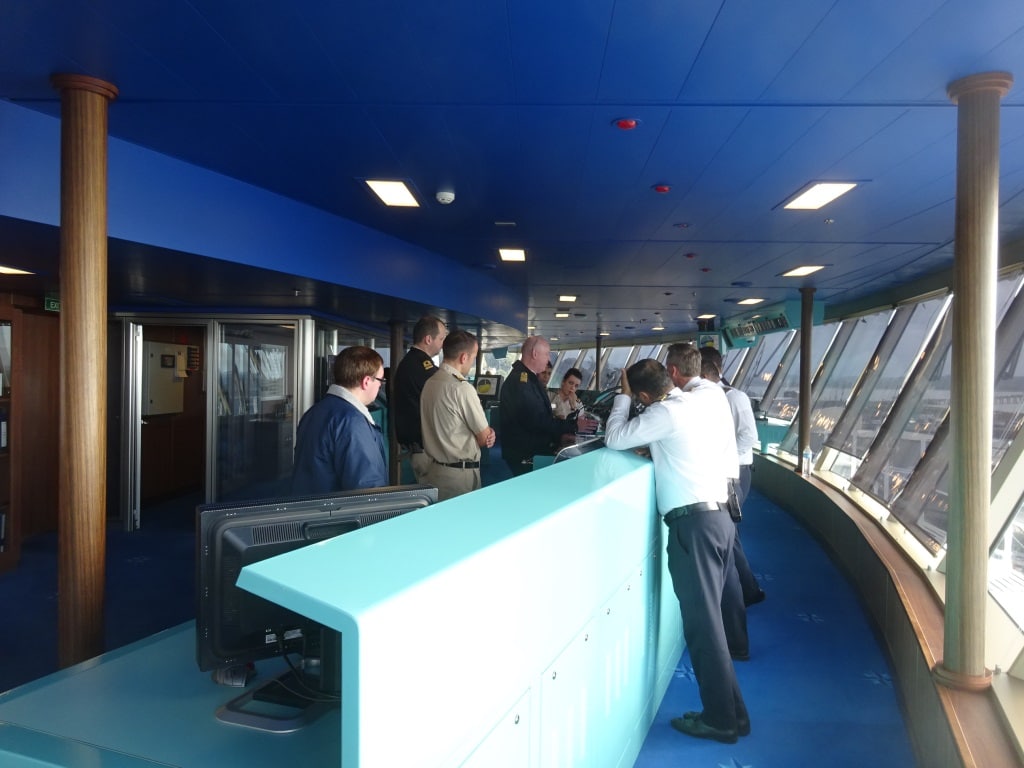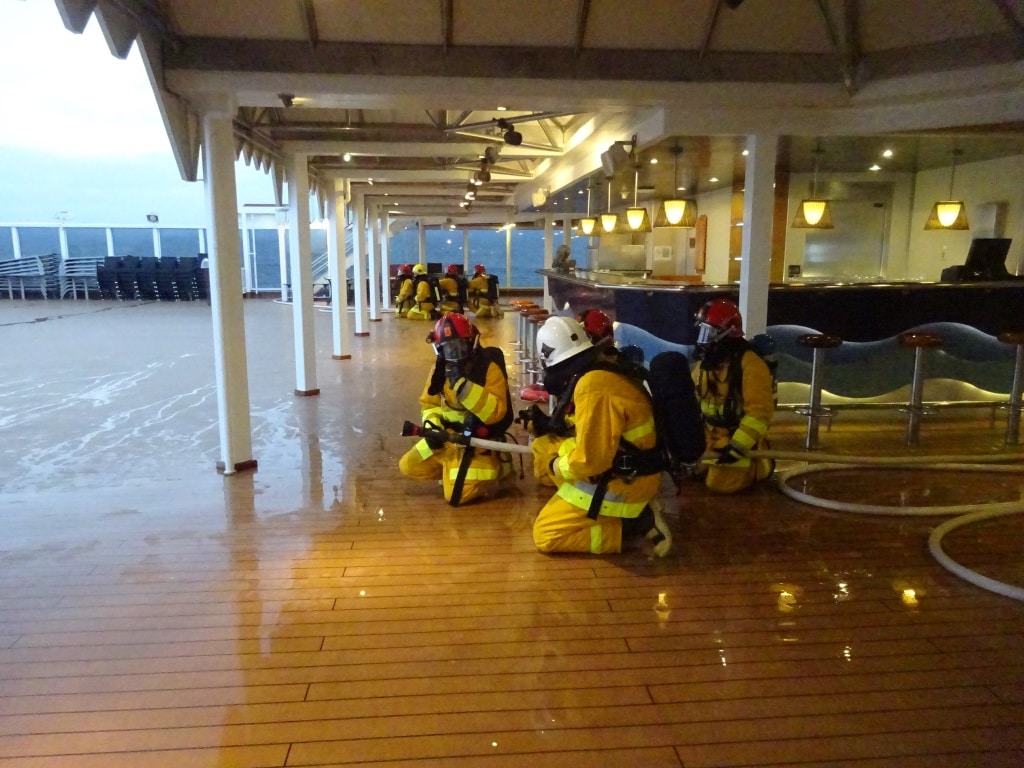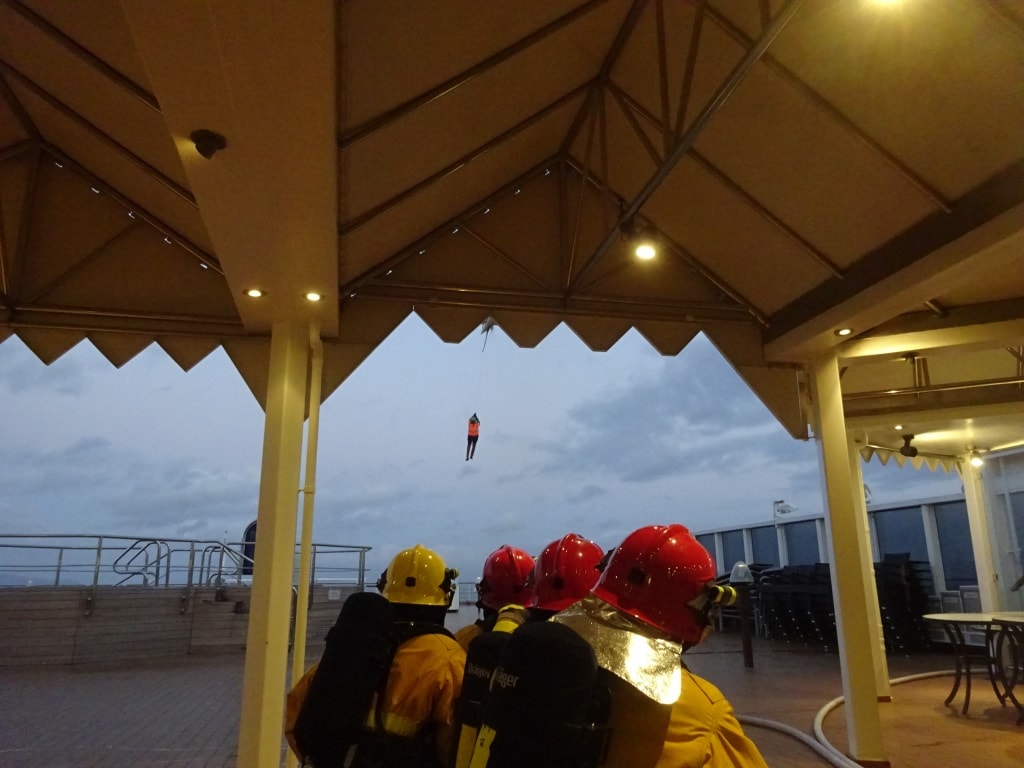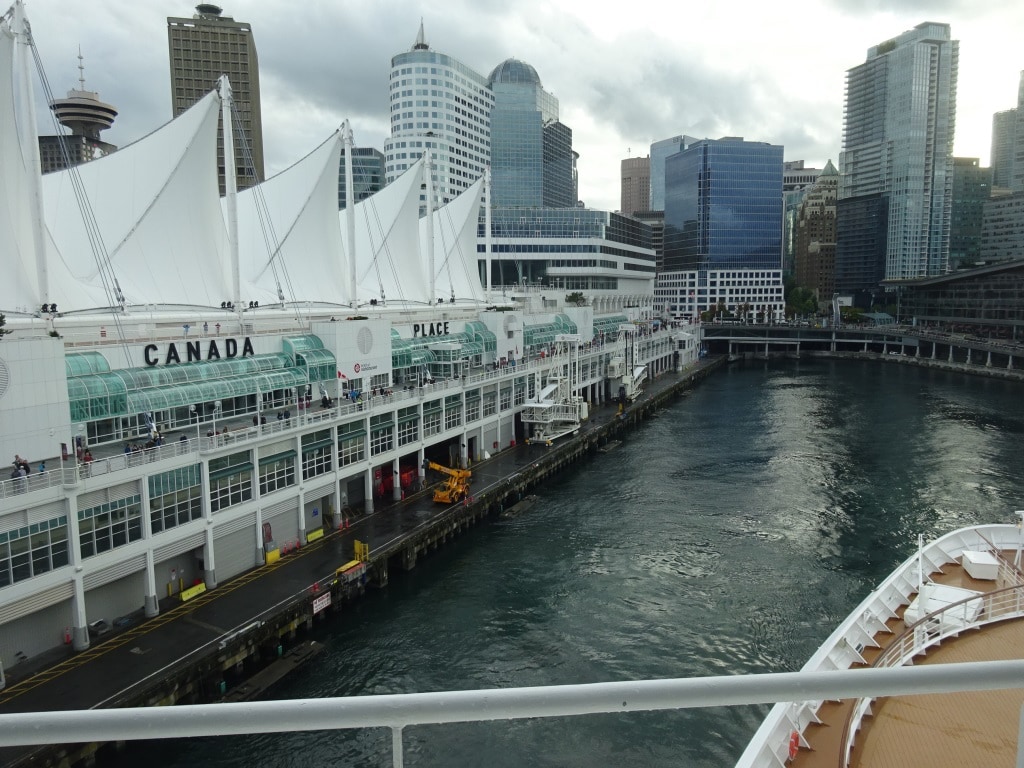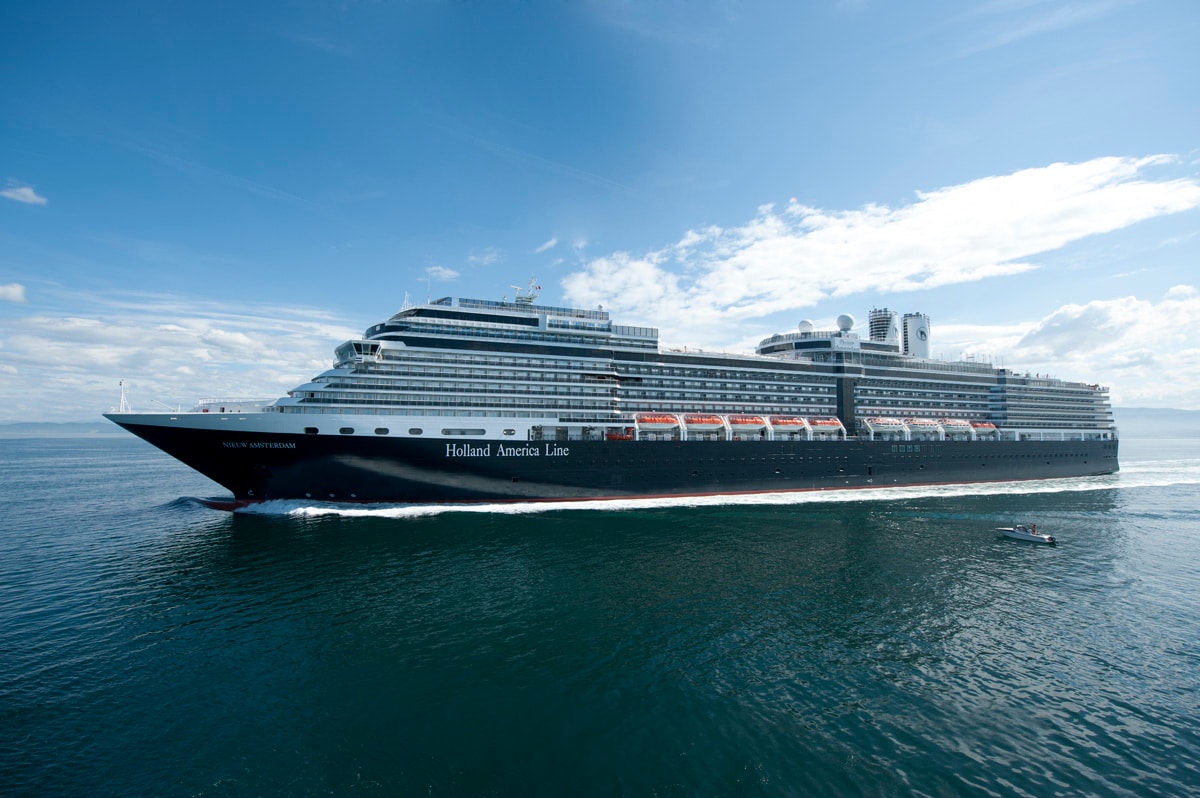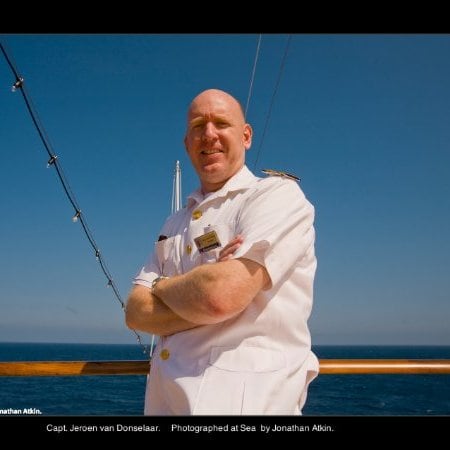The whole ship woke up to a sunny and sweltering Mexican day with not a cloud in the sky. We could thank our lucky stars that we were the only ship in port as that reduced the tender time considerably. A long and hot tender ride to start the port day is something nobody likes. As most ports do, Cabo also uses a pecking order to assign the anchorages. Contrary to Alaska where seniority rights are part of the equation, in Cabo it is all about size and frequency. Ships that call every seven days get the best anchorage. If there is more than one ship that calls every seven day on the same day, then the biggest one will get anchorage number 1 as it has to transfer the most guests to and from the port. The 2nd ship or sometimes even a 3rd ship is then going to anchorage 2 and 3. Ships who call less often and ships like our Nieuw Amsterdam which is making a single call, will be given the anchorages not used, or have to stay on the engines.
Thus we were lucky today, as were all by ourselves, something to be expected as we came in on a Saturday. The seven day ships that sail from Los Angeles either leave on Saturday or on Sunday, and cannot make it down to Cabo until Monday or Tuesday. If they call on the way back then they will visit on Thursday or Friday. As a result the weekend is often the quietest for cruise ship calls. Except during the spring and autumn migration of the ships to and away from Alaska, then the pattern falls apart a little bit. So we could have had another “migrating bird” with us but luckily we were alone.
Thus the Captain dropped the hook at anchorage number one under the watchful eyes of the local pilot. There did not used to be a pilot here, it is not really necessary, but since one or two cruise ships did not adhere to the schedule given to them by the authorities …………. E.g. they pinched a better anchorage…… it has been decided to put a pilot on board. So while in most ports the pilot’s main job is to navigate the ship into port, here the pilot’s main job is to represent the government. Not a bad gig, Fresh coffee and fresh rolls every day for breakfast and getting paid for it as well.
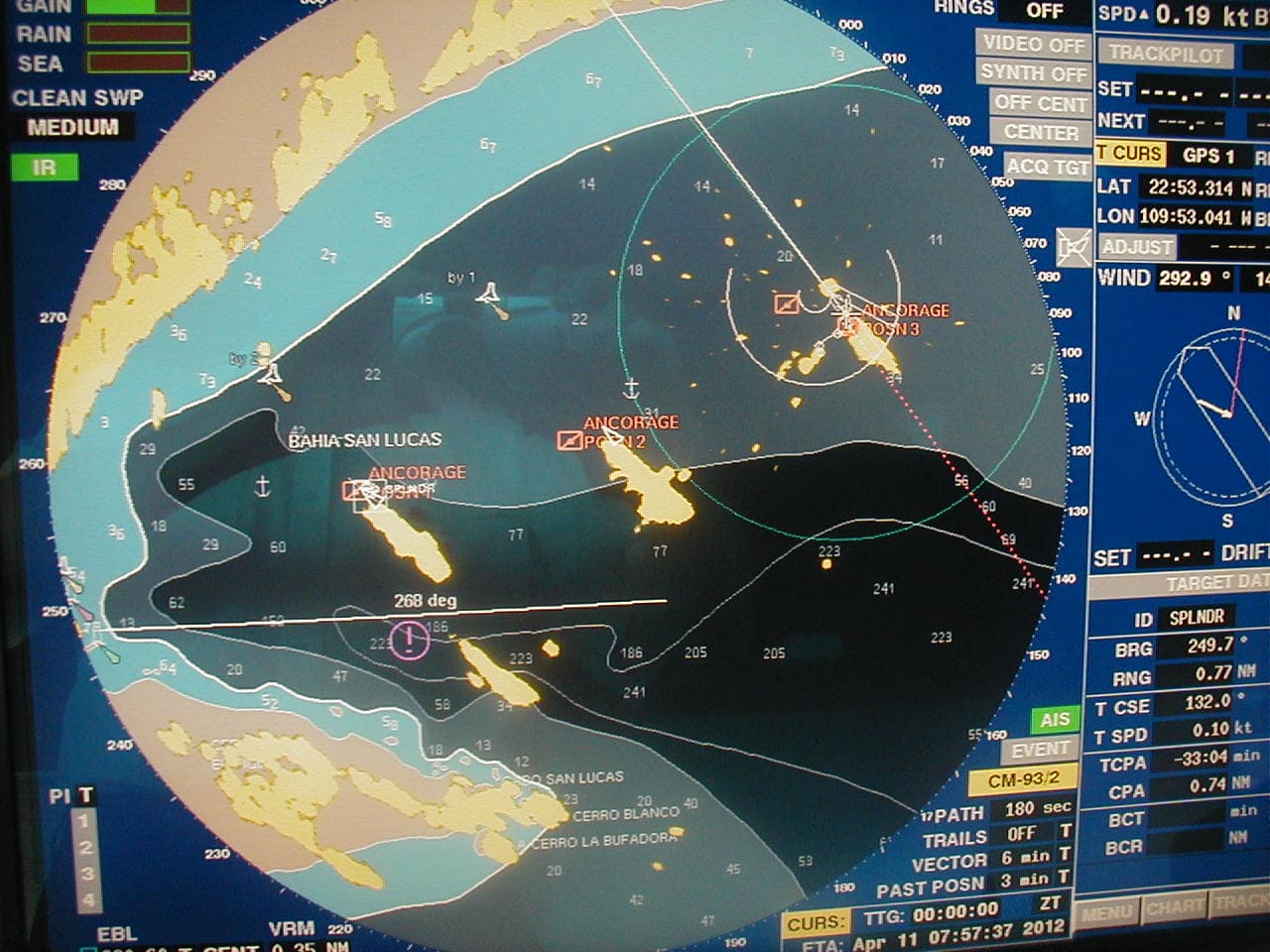
A busy day with three anchorages full. Me with the ms Veendam some years ago drifting on the engines in the lee of the rocks.
Apart from the anchorages, there is also the option to stay on the engines. Something we do if the swell is from the wrong direction and we cannot make a good lee while being at anchor. I have done that quite a few times in the past, drifting just south of anchorage number one. Here you can take advantage of being in the lee of the Los Arcos rock formation and you reduce the tender distance to the absolute minimum. Guests on board do not always appreciate how special a treat this is, but I know that on other ships, those at the regular anchorages, the guests were not amused as they were facing a longer tender service and that blasted Holland America Line ship drifted there just outside the port entrance.
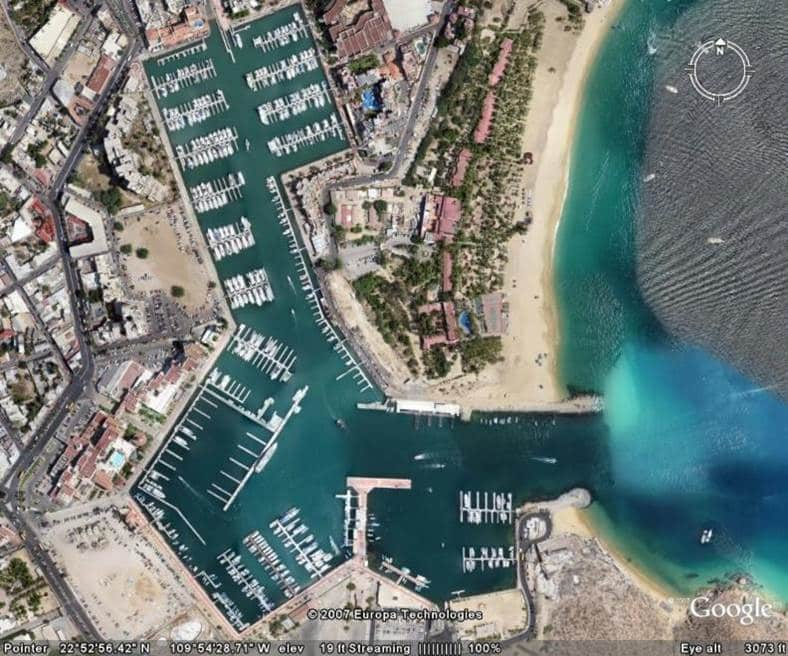
This is Cabo San Lucas Marina from above. We dock with our tenders at the big T pier in the middle. (Thank you Mr. Google)
Today the Nieuw Amsterdam did not need to do this as we had anchorage number one and with six of our own and 2 shore tenders running, a very efficient service was conducted. So efficient that the Cruise Director had to beg guests to go ashore as nobody was in a hurry and many guests did not even go. They had been there, had bought the T shirt (2 for 10.95 if white) and opted to stay in the cool air of the ships A.C.
I did the same as I am concentrating on refresher training at the moment for the crew. With the multiple teams we have on board, constant training is needed and I like to take over from the training officer so the crew involved gets a fresh face in front of them and a bit of a difference as I elaborate on the company’s standard curricula. I like to do role play as it hits home much harder than “death by power point” so to say. And it is quite hilarious and good fun for everybody when we act a scene where the Laundry guys have to try and get an angry guest back to the cabin. The Laundry crew is part of the deck clearing team; they remove deck chairs and everything else from the open deck so the guests can stand under their lifeboat stations. In an emergency there might still be guests there and they all have to move. Most will but there is always one……………….. so we train these guys who are seldom exposed to the guests during their regular work, in how to effectively get a non-cooperate guest to leave without resorting to turning the chair upside down.
Tomorrow we are in Puerto Vallarta where we are scheduled to arrive at 10.00 hrs. We will have another ship in port; the real “Apartment of the Seas”. The weather will be the same. Mid to high eighties and very little wind. But the forecasters have spotted a rain cloud so things might cool down a little bit.
